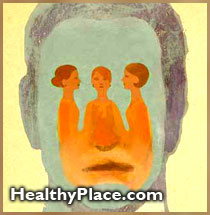Pathway to Health
(Doctor Dale Guyer discusses alternative medicine in the treatment of depression)
Guest physician Dr. Dale Guyer combines traditional and alternative methods in the treatment of common health problems.
Editor's Note: In 1997, the Post featured a series of TV health shows exploring the growing field of complementary medicine. Response from TV viewers was overwhelming. We invited Dr. Guyer back to share his knowledge from clinical work in both the traditional and complementary fields of medicine.
Q. Could you please tell us about St. John's Wort?
 A. St. John's Wort is an extract from a common plant that is used in hedgerows in Europe and seems to be useful in the treatment of depression and certain types of anxiety disorders. In some clinical studies, it has been shown to have potential as an immune-boosting agent that can be of help for patients in treating infections. Certain injectable extracts of the plant may have efficacy in treating HIV disease. Of course, this is a pure, pharmaceutical-grade extract of the plant, so it would not be something that a person could get the same results from by using homegrown herbal decoctions. The standardized herbal extracts that are used as prescription medicines in Europe for the treatment of depression are subject, to very high quality purification processes. You may not get the same physiological effect by taking an over-the-counter herbal preparation. They are very different substances.
A. St. John's Wort is an extract from a common plant that is used in hedgerows in Europe and seems to be useful in the treatment of depression and certain types of anxiety disorders. In some clinical studies, it has been shown to have potential as an immune-boosting agent that can be of help for patients in treating infections. Certain injectable extracts of the plant may have efficacy in treating HIV disease. Of course, this is a pure, pharmaceutical-grade extract of the plant, so it would not be something that a person could get the same results from by using homegrown herbal decoctions. The standardized herbal extracts that are used as prescription medicines in Europe for the treatment of depression are subject, to very high quality purification processes. You may not get the same physiological effect by taking an over-the-counter herbal preparation. They are very different substances.
Q. Is it called St. John's Wort in Germany?
A. Hypericum is another name that is often used. The concept of St. John's Wort often creates a lot of interest. The word "wort" in our culture has a different visual picture. It is actually an old word for "root."
Q. It's more popular right now in Europe than it is in the United States, is that right?
A. That's true. It relates to an interesting enigma. In our culture, the FDA gives us permission to use certain medications, but it has fairly stringent criteria for bringing a new drug to the marketplace. In Europe, particularly in Germany, there are separate regulatory agencies for natural compounds. Despite the fact that there exists a lot of data to support the use of St. John's Wort, most of it is published in Europe and oftentimes not in the English language, so a lot of the information tends to be unavailable to physicians who practice in this country. The unfortunate part is that this information gap puts physicians at a disadvantage because they just don't have the information or background to know how to prescribe the herb, nor do they have the confidence gained from clinical experience. An interesting observation I've noted is that oftentimes in our country, the medical consumer has a better source of information and education as it relates to natural products than do most physicians.
Q. Physicians would be concerned about the quality of the product.
A. True, product reliability is a major concern regarding many of the natural substances. There have been several studies where products are bought off the shelves, then assayed by an independent lab in order to determine how much of the active ingredient of a compound is actually in, for example, a capsule. The range is pretty dramatic to the point that certain herbal extracts might not even have the same herb that is advertised on the label; they might not have the same type of extract, or might not have the active components present. All these problems are improving. We have a lot of good companies and quality products out there. We also have many high-quality health- food stores. And many of the people who run these establishments are very well educated and can effectively direct a client or customer to the best-quality supplements.
Q. What should the consumer look for in buying St. John's Wort?
A. When you are looking at any herbal medicine like St. John's Wort, make sure it is a standardized extract. It will usually be stated on the label. For example, HyperiMed is a product made by PhytoPharmica. It clearly says on the label: St. John's Wort 300 mg, standardized to contain 0.3% hypericins, which is thought to be the active ingredient in the herbal product. It will have some sort of verification. In some cases, it will state that it is verified by a high-pressure liquid chromatography (HPLC), which is one way to standardize the active chemical constituents. There should also be an expiration date and some assurance of quality. For a consumer who might have questions, it is very reasonable to call a company and ask for verification that a product has been independently assayed: request the source of the extracts, and so forth. Any good, reputable company can supply that information. This way, you have a lot more assurance that you are getting a quality product.
Q. The reason that many people take St. John's Wort is that they are not afraid of its side effects, but they are afraid of the side effects of prescription drugs.
A. Side-effect profile is certainly an interesting concept. There is a book that I once read called Life Extension by Sandy Shaw and Durk Pearson. One of my favorite chapters in the book was titled, "Is there anything in the world that is absolutely safe?" The only word in the chapter was "No."
There is an assumption in the mind of the consumer that because something is natural, it is absolutely safe. Of course, we know that this is not quite accurate: many of the most toxic compounds in the world are natural compounds--arsenic, lead, mercury, etc. However, many natural substances tend to have, less propensity to have side effects than many of our standard prescription drugs. In my clinical experience, I have found that maybe 80 to 85 percent of the time, if not more, many of these very simple approaches work better and are better tolerated by most individuals than prescription medications. That is not to exclude the fact that we really need prescription medications in acute and crisis care. But three elements often missing from conventional medical care are an understanding of, information about, and experience in using some of the less-invasive therapies.
Q. If a patient comes to you who is mildly to moderately depressed, what are some other means you would use to treat this particular patient?
A. In that situation, there is often a reaction of opinion from the general medical provider's perspective. Here's a situation that has an emotional component, and I have eight minutes to spend with this patient, which is unfortunate. One way to effectively deal with this situation is to write a prescription for an antidepressant that might make someone feel better. But patients who have gone through this experience often tell me that they only feel better about feeling bad. They still feel bad.
Maybe a more effective route would be to look at what is contributing to the process. This culture keeps us so busy with so much stress that for a lot of people, it is often a situational issue. I think that you have to step back in a responsible way and look at the life experience of the individual and ask, What's going on and what could change here? Is there a light at the end of the tunnel when this process is going to shift? Then you look at simple things, as well. You ask if they are exercising. Exercise is such a big key. Our bodies are designed to be very physically active, and when they are not, it changes our perspective, our immune system, and many other parameters about living an optimal life. We then look at the social-support structure and at the emotional issue with a counselor. All these things have a bearing on the individual. There is often an assumption of looking for salvation in a pill. It doesn't occur. Salvation comes from our own responsibility. The pill can be a transitional piece that can certainly help with depression.
There are individuals with a genetic predisposition to possessing an altered genetic neurologic chemistry. Many of the people in this class might be looking at taking medication for a lifetime in order to more effectively cope with day-to-day existence. But they are not the majority of patients whom I or most other doctors see.
Q. What if a bipolar, or manic-depressive, patient came to you? They are on lithium but prefer something else, or maybe didn't get enough results from the lithium. Does St. John's Wort help with the depression period of a manic-depressive?
A. Lithium is a good step. It certainly has a lot of side effects, but it does offer effective therapy. That's a very reasonable approach. You have to look at what phase of the illness that person might be going through. If it is coupled with a lot of anxiety, you might look at another herbal medicine like kava or valerian root. Other types of approaches include biofeedback training, meditation, and exercise.
Q. Is valerian root available in health-food stores?
A. Yes. Valerian root used to be harvested and manufactured by pharmaceutical companies at the turn of the century. It was used as an effective treatment for insomnia, anxiety, and related disorders. You can buy it today in most health-food stores; even Sam's Club now has a fair supply of many of these natural compounds. You can always identify valerian root by its odor because the isovaleric acid--thought to be the active component--smells like dirty socks. Fortunately, it doesn't make the person smell like that, but the smell tends to decrease one's compliance with the medicine.
Q. What are some other pharmaceutical approaches to depression?
A. One of the compounds that I have found very useful in my own practice is a medicine that is approved by the FDA in this country for the treatment of Parkinson's disease. It is known as deprenyl, or Eldepryl. Another name for it is selegiline hydrochloride. It is used in Europe and elsewhere as a treatment for depression. It works by a different mechanism than more popular drugs like Prozac and Paxil, which work on the serotonin system in the bodies. Eldepryl works on dopamine. Dopamine is a neurotransmitter that regulates much of our behavior--motivation, memory, and so forth.
The most common side effects one sees with antidepressants, especially of the serotonin type, are the sexual side effects---difficulty in achieving orgasm, for example, and other sexual dysfunction. Deprenyl, on the other hand, tends to actually have a libido-enhancing property. It seems to be more noticeable for men, but in my clinical experience, I have noticed it occurs in both genders, which is a significant plus for a lot of people looking at a medicine that would help with managing depression.
Another thing about deprenyl that I find fascinating is that it seems also to improve memory significantly. There is a growing interest in what is called life-extension medicine, which I am sure will become a medical subspecialty. Deprenyl is one of those very interesting compounds that when given to laboratory animals seems to increase their maximum lifespan, which is a fascinating concept. If you extrapolate the data from animal models to human experience, it would suggest that we might all live to be 160 or 180 years old--a significant event.
Q. Are there side effects to deprenyl?
A. Everything has side effects. The most common ones that I have seen with deprenyl are stomachache, nausea, lightheadedness, and headaches. Those are infrequent, but not unusual. Deprenyl belongs to a class of medicines called MAO (monoamine oxidase) inhibitors. Some problems can occur when patients on MAO type A inhibitors consume cheese or other foods that contain an amino acid called tyramine. Deprenyl, however, belongs to a different class. It is an MAO type B selective inhibitor, so the tendency to have those side effects is not really present until one gets to a very high dose. For the doses required to treat as an antidepressant or as memory-enhancing medicine--life- extension medicine--doses are very low, but you always have to be cautious and attentive to what's going on.
Q. Any cheese or just aged cheese?
A. Mostly aged cheeses.
Q. The large population of senior citizens should be very interested in life extension. With the year 2000 approaching, many 80-year-olds will want to get there and beyond to see what happens.
A. Some people ask, "Why would I want to live to be 160 years old if I'm going to have all the associations of aging?" In the animal studies to date, they maintained a very active lifestyle. How you gauge that for a rat is a challenge, but you can say that they ran mazes as fast as the younger animals, didn't lose their hair, and remained sexually active until the day they died.
Q. Our readers will be very interested in life enhancement, including maintaining the libido. It's healthy to be active sexually.
A. Like exercise, sexuality has a lot of health benefits as well. Many compounds are thought to be members of that class of life-extension or cognition-enhancing medicines. There are medical organizations assembled to research and bring this information to the forefront. The American Academy of Anti-Aging Medicine is one. A newsletter called Smart Drug News, published by the Cognition Enhancement Research Institute in Menlo Park, California, focuses on research into cognition-enhancing medicines, often called "smart drugs." What we don't realize in this country is that elsewhere in the world, patients have access to many medical compounds and pharmaceuticals that can actually increase intelligence and cognitive capacity. Had I known about this when I was going through medical school, Gross Anatomy would have been much easier.
Q. My mother gave my brother okra, which for whatever reason was considered a brain food. When he was at home, she would cook okra soup. He did excel and was at the top of his class at Annapolis. What are some brain foods?
A. One example that I will mention is a compound called dimethylaminoethanol (DMAE). You have probably heard the story that eating sardines makes you more intelligent. There might be some truth to this observation. Sardines have a higher level of this DMAE. In the past, DMAE was a prescription medicine. It is now available over the counter. Many people notice that DMAE helps improve their memory, visual-spatial skills, cognitive awareness, verbal ability, and so forth.
Q. If readers wanted to know more about these subjects, how would they subscribe to the newsletter?
A. They do have a website [www.ceri.com/sdnews.htm]. The newsletter is called Smart Drug News.
Q. We were pretty excited about Evista, Eli Lilly Company's recently approved drug to prevent osteoporosis. It seemed to be a good alternative for women who can't take estrogen, yet want to make sure that they don't have a hip fracture before they are 80 years old. Osteoporosis is a major problem. Maybe how much calcium you took as a child is important in building a bank of calcium. How do you prevent osteoporosis and hip fractures?
A. Osteoporosis is, unfortunately, a big problem in this country. In addressing osteoporosis, you have to look at the individual. Dietary considerations are very important, as is the hormone status. It is less clear that estrogen contributes much to overall bone density, whereas we know that some hormones that have a more anabolic quality- -like progesterone, DHEA, testosterone, and growth hormone--will increase bone density. My first approach would be to give the patient a global endocrine evaluation: What are levels of all the hormones, not just estrogen?
But there is a common-sense element to approaching the disease as well. We can have all the hormones on board and the nutritional component-the calcium, magnesium, and so forth--in place, but if you don't have the physiologic drive to enhance bone density, you only get so far. The physiologic drive for bone is to have a load placed on it, which comes back to weight-bearing exercise. This is a tough sell for many women. When you tell them that they need to go to the gym and pump iron, some think that they will end up looking like Arnold Schwarzenegger, which really isn't the case. It's not so much that they are striving to compete in a powerlifting competition or even a bodybuilding competition. It's using the load-bearing exercise to put stress on the bone and connective tissue, and thereby increasing its strength and bone density.
Q. How do you motivate your patients to get out there and do the right kinds of exercises?
A. What I encourage them to do is to take one day at a time. Set one simple, attainable goal, such as going to the gym tomorrow and working out for ten minutes. As people make a habit of exercise, they find that the more they get involved and engaged in the exercises, the better they start to feel. They then begin to crave feeling better, as opposed to craving some of the bad habits.
Q. Do you have personal trainers who help people get on track?
A. If exercise of that capacity is a new experience, it's definitely a good idea to work with a personal trainer who can help set up a program that meets a person's individual needs.
Q. Could you tell us how you investigate a thyroid deficiency?
A. Thyroid dysfunction is very common. It is unfortunate that many patients have this problem, but it is not recognized. In my practice, I frequently see patients who say that they are cold all the time; gain weight easily; don't lose weight easily; have poor exercise tolerance, decreased libido, poor concentration, dry skin, brittle nails, etc.- -basically, a textbook description of low thyroid function.
Q. Thinning outside eyebrows?
A. Lateral margins of the eyebrows are among the observations that can sometimes be made, as is lower-extremity edema and slow heart rate. The fatigue seems to be a common issue that is associated with a deficiency of thyroid hormone. We have thyroid tests that can measure hormone levels. That would probably be an adequate screen for a majority of people. However, there are many individuals who seem to have a subclinical hypothyroid picture. Their lab tests are normal, yet they have all the symptoms that we just talked about. With these individuals, a thyroid-replacement therapy is something definitely worth trying. In my clinical experience, I find that this can change someone's life dramatically. This goes back to the issue of depression, too. There are studies now that are looking at thyroid-replacement therapy to treat depression. In many cases, it works very well. It's unfortunate that thyroid deficiency is something that is not very commonly recognized in conventional medicine.
Q. It is an underdiagnosed affliction.
A. Certainly underdiagnosed.
Q. A lot of people are now on low-salt diets, and noniodized salt is probably cheaper in restaurants and canneries than iodized salt. Are some people possibly not getting enough iodine in their diets?
A. That is a real possibility. I don't think it is as common as it used to be. Goiters and iodine deficiency used to be endemic in some areas of the country many years ago. However, there are situations in which individuals have a higher-than-usual metabolic need for certain nutrients, and there are tests that determine this. Iodine is no exception. Iodine supplementation, itself, can be a very effective treatment for fibrocystic breast disease, certain problems of ovarian function, and so forth. We tend to think of iodine as only functioning for the thyroid, but actually it is also used in many other areas of the body. The ovaries are a good example. If I remember my physiology correctly, ovaries are the second most prolific users of iodine, as far as organs, in our body.
Q. In men, the prostate uses zinc. Where is the zinc pump in women?
A. What we know is that prostate tissue tends to have a lot of zinc in it. Exactly what the role might be is a little less clear, but we do know that zinc is involved in the hormonal regulations of the male androgens. It is also involved with hormonal regulation in women. Like many of the other trace minerals, we don't know all of the activities and how zinc is used. There are so many trace minerals- -such as vanadium, strontium, boron, and so forth--whose activities are less well defined, partially because we need such small quantities of these nutrients to maintain normal health that it is very difficult to delineate where it is functioning in the body.
Q. There is a Purdue man who has good evidence that for some people, copper is able to help with their arthritis. A. Copper bracelets do help a lot of people with their arthritis. Using a copper supplement can be helpful for some people. There is some research that would suggest that antiinflammatory drugs commonly prescribed to treat the pain associated with arthritis only work as they bind to a copper ion in the body. Copper seems to play a big role in our bodies. We know that it is used as an enzymatic cofactor for cross-linking collagen, which adds structural integrity to our connective tissues, circulatory system, and any place collagen is used. Although copper has many benefits, we don't want to overdo it, either, because copper is thought to be one of those ions like iron that generates free radicals. It's an example of balance. Everything is best in balance. If you get too low, there are problems. If you get too high, there are potential side effects as well.
Q. I have always wondered why they didn't put copper in the soles of their shoes where it wouldn't show, instead of wearing copper bracelets around their wrists and letting their skin turn colors.
A. That's a new marketing concept that could go over big.
next: Patient Satisfaction With Electroconvulsive Therapy
~ all Shocked! ECT articles
~ depression library articles
~ all articles on depression
APA Reference
Staff, H.
(1998, March 2). Pathway to Health, HealthyPlace. Retrieved
on 2024, June 1 from https://www.healthyplace.com/depression/articles/pathway-to-health
 When psychologist Kay Redfield Jamison, Ph.D., wrote
When psychologist Kay Redfield Jamison, Ph.D., wrote  Anxiety is a part of our lives. It is a normal and protective response to events outside the range of everyday human experience. It helps us concentrate and focus on tasks. It helps us avoid dangerous situations. Anxiety also provides motivation to accomplish things that we may otherwise tend to put off. As you can see, anxiety is essential to our survival.
Anxiety is a part of our lives. It is a normal and protective response to events outside the range of everyday human experience. It helps us concentrate and focus on tasks. It helps us avoid dangerous situations. Anxiety also provides motivation to accomplish things that we may otherwise tend to put off. As you can see, anxiety is essential to our survival.
 What's the best treatment of anxiety disorders during pregnancy? Can anxiety harm the baby? Read about treating anxiety symptoms during pregnancy.
What's the best treatment of anxiety disorders during pregnancy? Can anxiety harm the baby? Read about treating anxiety symptoms during pregnancy. A former Macon psychologist pleaded guilty Tuesday to criminal charges of having sex with a patient, a woman who was suffering from a multiple personality disorder (MPD).
A former Macon psychologist pleaded guilty Tuesday to criminal charges of having sex with a patient, a woman who was suffering from a multiple personality disorder (MPD). Center for Women and Children's Health, Department of Obstetrics and Gynecology,Karolinska Hospital,Stockholm, Sweden
Center for Women and Children's Health, Department of Obstetrics and Gynecology,Karolinska Hospital,Stockholm, Sweden Running down the concrete hill from the crowded school bus to home, I would fly down the street feeling free to finally follow my tomboy ways. It was the discoveries awaiting me in the woods behind our house that propelled me through the air with such excited fervor. After quickly changing out of my school uniform and grabbing my fishing pole, I'd head down to the lake. It was my haven of peace. My own, private playground. As I made my way through the woods, I wondered if I would hook that big bass I had spotted slowly gliding under the water's edge the day before. Maybe I'd catch a frog or some bluegill to fry up in a pan of butter for an after-school snack. You never knew what you were going to get down by the lake. That was the thrill.
Running down the concrete hill from the crowded school bus to home, I would fly down the street feeling free to finally follow my tomboy ways. It was the discoveries awaiting me in the woods behind our house that propelled me through the air with such excited fervor. After quickly changing out of my school uniform and grabbing my fishing pole, I'd head down to the lake. It was my haven of peace. My own, private playground. As I made my way through the woods, I wondered if I would hook that big bass I had spotted slowly gliding under the water's edge the day before. Maybe I'd catch a frog or some bluegill to fry up in a pan of butter for an after-school snack. You never knew what you were going to get down by the lake. That was the thrill. As I matured, I learned to act like a woman. I learned to suppress my strength once I realized men wanted to protect me, not compete with me. When my confidence intimidated them, I turned myself into a giggly, ditzy blonde. I knew I couldn't maintain a facade like that my whole life, so I assumed I would never find a man strong enough to enjoy my dualities. Eventually, I found a man who appreciated my independence and unique combination of qualities. I was a full grown woman, and married, but I still carried the Tomboy inside.
As I matured, I learned to act like a woman. I learned to suppress my strength once I realized men wanted to protect me, not compete with me. When my confidence intimidated them, I turned myself into a giggly, ditzy blonde. I knew I couldn't maintain a facade like that my whole life, so I assumed I would never find a man strong enough to enjoy my dualities. Eventually, I found a man who appreciated my independence and unique combination of qualities. I was a full grown woman, and married, but I still carried the Tomboy inside. Psychiatrist and author Peter Breggin says shock treatment is little more than an electrical lobotomy. Breggin says electroconvulsive therapy (ECT) causes brain damage - and, he says, most psychiatrists know it.
Psychiatrist and author Peter Breggin says shock treatment is little more than an electrical lobotomy. Breggin says electroconvulsive therapy (ECT) causes brain damage - and, he says, most psychiatrists know it. A once-prominent psychologist has been sentenced to two years in prison for "brainwashing" two of his former patients into having sex with him.
A once-prominent psychologist has been sentenced to two years in prison for "brainwashing" two of his former patients into having sex with him. A WOMAN has undergone the longest continuous course of electric shock treatment for depression.
A WOMAN has undergone the longest continuous course of electric shock treatment for depression.